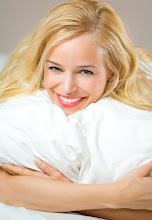
Thousands of years before Blackberries and e-mail, people communicated with one another using symbols, colors and shapes. They shared stories of their triumphs, their tragedies and their hopes for the future on their walls, jewelry, armor and furnishings.
Walk into any household and know that the family had lost a son in battle, or that they believed in an afterlife, by noticing one thing: the rug.

The first carpet to be found in an icy Mongolian grave 1949 dates back 2,500 years ago in Central Asia. The ‘Pazirik’ carpet of years past and the Middle Eastern and Oriental carpets of today follow the tradition of using motifs to transmit ideas, protect a household or offer a piece of good luck.
Woven in copper and light green fibers, the knotted ‘Pazirik’ carpet (above middle) bears a four-winged star at its center.

In other carpets, we see some of these most widely recognized motifs:
- The eye: Reversing bad luck and misfortune onto those with an evil glance, the eye protects those from others who wish to cause harm. Popular in the Middle East and Turkey, the eye motif appears in jewelry and other tokens.
- The tree of life: The bridge between the mortal and spiritual world comes from a verdant tree that continues to grow in the afterlife even after mortal death. Floral and garden designs stem from the belief in the afterlife. Not surprisingly, paradise is the Persian word for garden.
- The bird: Freedom. Liberty. The bird typically represents good news brought from afar.
- The head of wheat: To a civilization that long looked to agriculture to measure its wealth and success, the head of wheat symbolizes prosperity thanks to a bountiful Earth.
Take a look at a classic or modern rug and you will find that its pattern and design weave elements of folklore, history and mythology into its fibers. Boasting ingenuity, creativity and quality, these rugs will survive long after we are gone, only to tell our story to the next generation.
-S. Gonzalez
*Photo courtesy of landryandarcari.com; decorinnovation.com; and www.rugs-oriental.net










